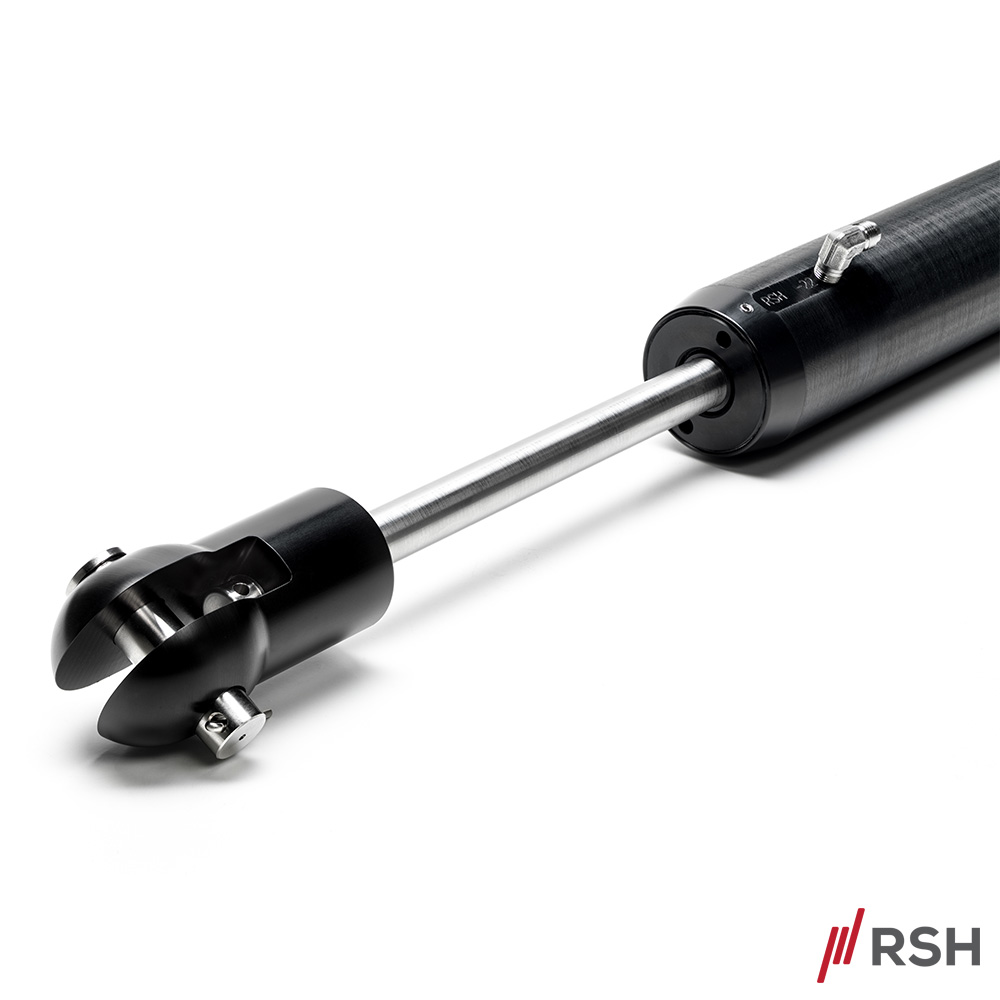
11 Jul Hydraulics : Elegant Muscle part 1
By Steve Loutrel
Say you’re going to windward and you need to tension the backstay to 9,000 pounds (4 Tons) to minimize headstay sag and flatten the genoa -and then once you’re around the mark, you need to ease the load with full control. Can you do it with just your fingertips? Say you need to dump the boomvang instantly in a sudden broach. What if you want to raise, lower, or tilt the centerboard on your shoal-draft cruising boat? Or say you’re singlehanding and need to lower the dinghy, grind in the headsail, raise the anchor, thrust the bow to port or starboard while docking? Hydraulic Systems, whether configured in a self-contained, single-function unit or as a manual or powered multi-function system, can do all these jobs for you and more.
Applications
Where a high or very high force is needed, hydraulic systems offers significant advantages over mechanical and electromechanical solutions.
A lot of muscle can be generated by a relatively small hydraulic cylinder; for travels from several inches to 3 feet, hydraulics are an elegant solution to tasks that require tensioning, pushing, pulling, or support. For longer travels, extra-long cylinders can be built.
Hydraulics are generally very reliable in marine applications. The hydraulic system operates at high pressure, and if any leaks occur the flow is outward, which means hydraulic fluid leaking out rather than seawater invading the works. Most of the the critical and moving parts are inside the cylinder, bathed by the hydraulic fluid.
Even commercial hydraulic components of painted steel, used on large work vessels, work for years with rust on their exteriors.
With electrical systems and components, in contrast, even minute traces of salt water can cause problems almost immediately. Electrically driven hydraulic systems -configurations that use electric motor, control systems and valves- are also typically more reliable than straight electric motor-powered systems, the electrical components that service the hydraulic system can be located in a dry, protected area such as the engine room. Only the remote hydraulic actuators have to live in a wetter, salt environment on deck.
Stephen “Steve” Loutrel is Consultant in Naval Architecture and Mechanical Engineer
Director of engineering in Navtec and Lewmar-Navtec from 1976 to 2009






